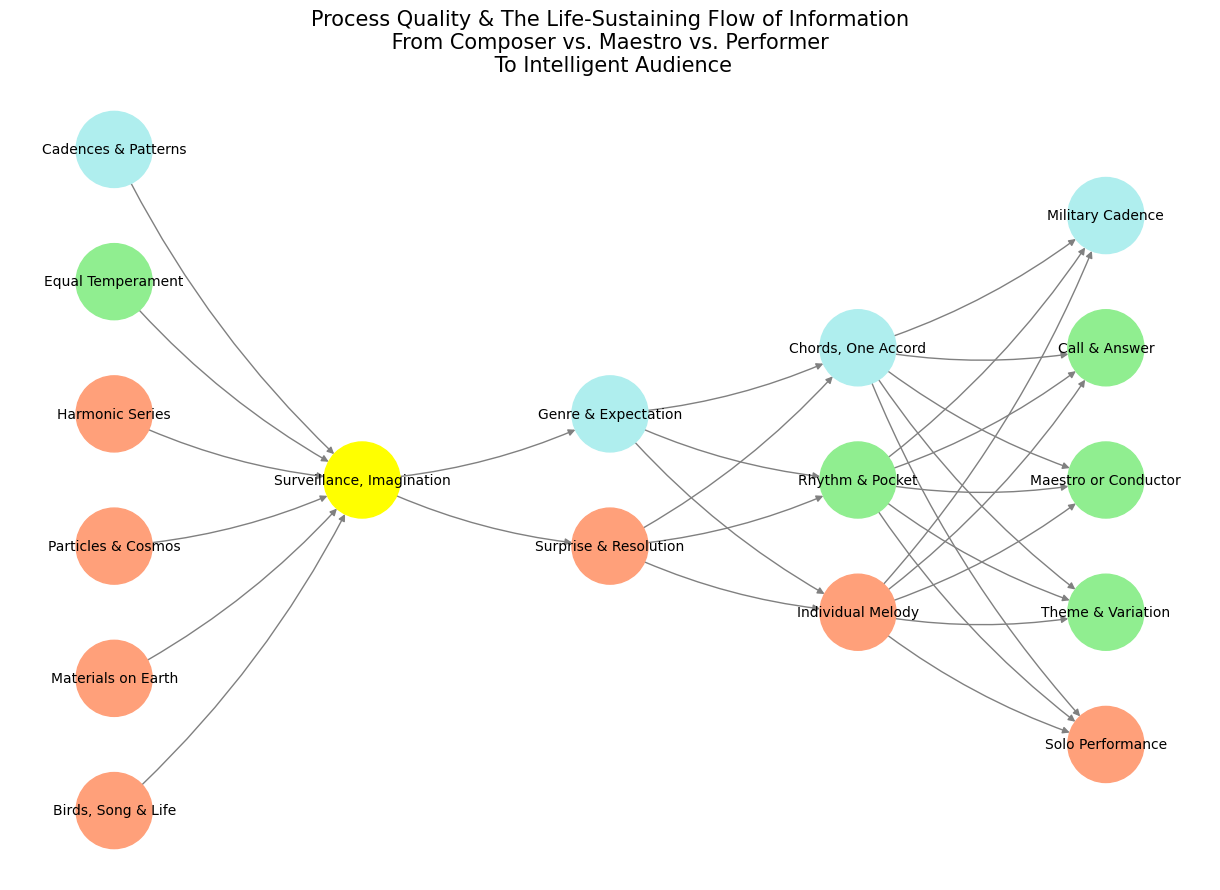Attribute#
Might we replace the conductor or maestro with a metronome, thereby digitizing the whole process? Why the human drama? After all Gould (soloist during a famous piano concerto performance) and Bernstein (maestro, conductor) completely disagreed on the temple of a piece by Mozart?
The 1962 New York Philharmonic concert featuring Glenn Gould and Leonard Bernstein remains one of the most debated moments in classical music history, encapsulating a collision of artistic vision and interpretative authority. At its heart lay Johannes Brahms’ First Piano Concerto, a masterwork that became a battlefield for the contrasting philosophies of pianist and conductor.
Glenn Gould, renowned for his iconoclastic approach to music, had conducted extensive research that led him to a radical reimagining of Brahms’ concerto. Gould’s interpretation was marked by an unusually slow tempo, emphasizing introspection and detail over the traditional grandeur and drama expected of the piece. Bernstein, one of the 20th century’s most celebrated conductors, found Gould’s approach fundamentally at odds with his own understanding of the work. Yet, Bernstein faced a profound dilemma: should a conductor impose his vision on the soloist or honor the artist’s autonomy, even when in stark disagreement?
The controversy reached its zenith when Bernstein, moments before the performance, addressed the audience from the podium. In a gesture unprecedented in classical music, he publicly distanced himself from Gould’s interpretation. Bernstein described his role as “an accompanist” for the evening, emphasizing that while he did not share Gould’s vision, he respected the pianist’s right to express it. This speech, while tactful in its tone, drew attention to the disagreement and set the stage for a performance already laden with tension.
Gould, characteristically unflappable, was reportedly unfazed by Bernstein’s public remarks. On the contrary, he later acknowledged the value of Bernstein’s comments, suggesting an unusual camaraderie in their creative discord. The pianist’s performance that evening, although divisive, exemplified his dedication to his unique artistic ideals.
This event raises profound questions about the dynamics of collaboration in classical music. At its core is the debate over authority: does the conductor hold ultimate interpretive power, or should the soloist’s vision prevail? Bernstein and Gould’s willingness to navigate their disagreement in the public eye speaks to their mutual respect for the music and its ability to spark dialogue.
The Brahms concerto, with its sweeping Romanticism and structural complexity, became a canvas for these opposing forces. Gould’s slower tempo invited the audience to engage with the piece in a way that challenged convention, drawing attention to nuances that might otherwise go unnoticed. Bernstein’s reservations, meanwhile, underscored the importance of maintaining the concerto’s dramatic trajectory.
In retrospect, this event transcends the specifics of tempo and interpretation. It symbolizes the broader tension between tradition and innovation, between adherence to established norms and the pursuit of creative individuality. By agreeing to disagree so publicly, Gould and Bernstein demonstrated a commitment to artistic integrity that continues to resonate.
The 1962 performance remains a touchstone in the history of classical music, illustrating the life-sustaining flow of artistic information—where creativity, conflict, and collaboration converge to produce something greater than the sum of its parts. Their disagreement, immortalized in both critical analysis and public memory, reflects the enduring vitality of interpretative debate in the arts. This moment, as contentious as it was, serves as a reminder that in music, as in life, the richest meanings often emerge from conflict rather than consensus.
Show code cell source
import numpy as np
import matplotlib.pyplot as plt
import networkx as nx
# Define the neural network structure; modified to align with "Aprés Moi, Le Déluge" (i.e. Je suis AlexNet)
def define_layers():
return {
'World': ['Birds, Song & Life', 'Materials on Earth', 'Particles & Cosmos', 'Harmonic Series', 'Equal Temperament', 'Cadences & Patterns'],
'Perception': ['Surveillance, Imagination'],
'Agency': ['Surprise & Resolution', 'Genre & Expectation'],
'Generativity': ['Individual Melody', 'Rhythm & Pocket', 'Chords, One Accord'],
'Physicality': ['Solo Performance', 'Theme & Variation', 'Maestro or Conductor', 'Call & Answer', 'Military Cadence']
}
# Assign colors to nodes
def assign_colors(node, layer):
if node == 'Surveillance, Imagination':
return 'yellow'
if layer == 'World' and node in [ 'Cadences & Patterns']:
return 'paleturquoise'
if layer == 'World' and node in [ 'Equal Temperament']:
return 'lightgreen'
elif layer == 'Agency' and node == 'Genre & Expectation':
return 'paleturquoise'
elif layer == 'Generativity':
if node == 'Chords, One Accord':
return 'paleturquoise'
elif node == 'Rhythm & Pocket':
return 'lightgreen'
elif node == 'Individual Melody':
return 'lightsalmon'
elif layer == 'Physicality':
if node == 'Military Cadence':
return 'paleturquoise'
elif node in ['Call & Answer', 'Maestro or Conductor', 'Theme & Variation']:
return 'lightgreen'
elif node == 'Solo Performance':
return 'lightsalmon'
return 'lightsalmon' # Default color
# Calculate positions for nodes
def calculate_positions(layer, center_x, offset):
layer_size = len(layer)
start_y = -(layer_size - 1) / 2 # Center the layer vertically
return [(center_x + offset, start_y + i) for i in range(layer_size)]
# Create and visualize the neural network graph
def visualize_nn():
layers = define_layers()
G = nx.DiGraph()
pos = {}
node_colors = []
center_x = 0 # Align nodes horizontally
# Add nodes and assign positions
for i, (layer_name, nodes) in enumerate(layers.items()):
y_positions = calculate_positions(nodes, center_x, offset=-len(layers) + i + 1)
for node, position in zip(nodes, y_positions):
G.add_node(node, layer=layer_name)
pos[node] = position
node_colors.append(assign_colors(node, layer_name))
# Add edges (without weights)
for layer_pair in [
('World', 'Perception'), ('Perception', 'Agency'), ('Agency', 'Generativity'), ('Generativity', 'Physicality')
]:
source_layer, target_layer = layer_pair
for source in layers[source_layer]:
for target in layers[target_layer]:
G.add_edge(source, target)
# Draw the graph
plt.figure(figsize=(12, 8))
nx.draw(
G, pos, with_labels=True, node_color=node_colors, edge_color='gray',
node_size=3000, font_size=10, connectionstyle="arc3,rad=0.1"
)
plt.title("Process Quality & The Life-Sustaining Flow of Information\n From Composer vs. Maestro vs. Performer \n To Intelligent Audience", fontsize=15)
plt.show()
# Run the visualization
visualize_nn()


Fig. 18 Glenn Gould and Leonard Bernstein famously disagreed over the tempo and interpretation of Brahms’ First Piano Concerto during a 1962 New York Philharmonic concert, where Bernstein, conducting, publicly distanced himself from Gould’s significantly slower-paced interpretation before the performance began, expressing his disagreement with the unconventional approach while still allowing Gould to perform it as planned; this event is considered one of the most controversial moments in classical music history.#

